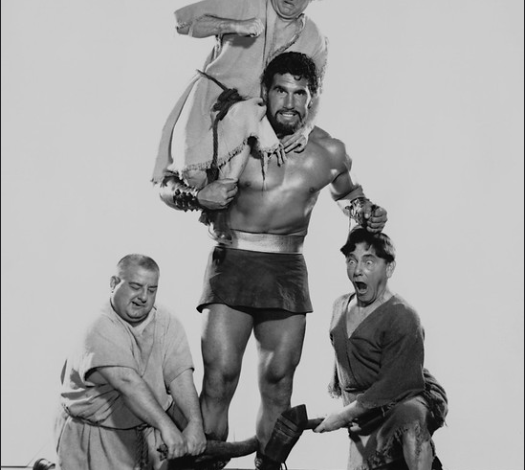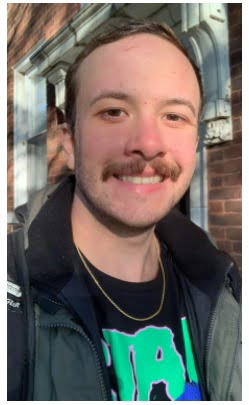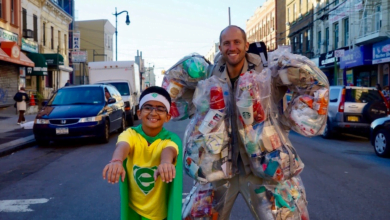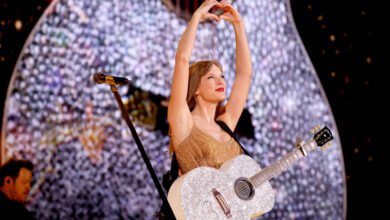
After the slide and click of a VHS tape, the black and white picture appeared in front of me on the TV. The giggles started pouring out as I watched a copy of The Three Stooges Meet Hercules. As I continued watching the film I realized the inherent masculinity portrayed in the film interested me. I was hooked by the gladiators fighting for their lives in ancient Greece. Watching The Three Stooges Meet Hercules was one of the first times I remember I was attracted to men. It was also the first time I realized that the men I was attracted to were not the men that I looked like, and perhaps men that I never wanted to look like.
I loved the look of the strong gladiators in this fictitious world. They took control of a room. People looked up to them. It was later in life that I realized that I was not alone in the gay community. A lot of men prefer masculine men. Benjamin Gerrard states that “masculine idealization in romantic partner preferences were associated with higher levels of internalized negative attitudes and beliefs about one’s same-sexual orientation”.
But I was never that man. I was disinterested in the gym. I couldn’t be bothered to talk about cars, or sports, or anything else manly. I did everything in my power to distance myself from anything male. Despite my shame in anything male, I was still attracted to them. I tried to hide from the male identity for a while in my mind. However, I still presented as male for so long. It wasn’t until college that I found a way to understand my place in a man’s world without being part of it.
What I failed to connect to was a lot of the values of what it means to be masculine. These values, which are socially constructed, continue to reiterate the dominant and dated masculine ideals. Francisco J. Sanchez states that “men should not be feminine; men must be respected and admired; men should never show fear; and men should seek out risk and adventure.” They also should be successful, achieve power, be competitive, and restrict their emotions. Masculinity also has to tie into physical appearance. These masculine physical attributes include having a big frame, large muscles, tattoos, and piercings.
If men don’t follow these constructed values, they’re likely to be marginalized in order to maintain them. Queer men are more likely to feel marginalized due to the perceived notion that being queer does challenge these constructs and are being reminded of that through bullying and abuse. Simultaneously, Queer men struggle with body image issues due to men objectifying others. Because of the body image sensitivities, they can be inclined to have tough diet regimens or use steroids. These influences lead men to desire a masculine partner.
These ideals itched at me for a long time as a queer youth. As much as the masculine persona swayed me, I wanted to distance myself from it as much as possible. This distance led me to a further analysis of my gender and how I fit into this conversation of the binary.
The National Center for Transgender Equality states that the Nonbinary identity is a term “people use to describe genders that don’t fall into one of these two categories, male or female”. Some Nonbinary people blend elements into the male and female identities, while others may prefer to operate outside of those lines. While identifying as Nonbinary, I find it easier to navigate the preconceived notions of what being male is. I don’t have to fall into the stereotypes of acting certain ways or being interested in certain topics. I can wear skirts one day and trousers the next. I do acknowledge the masculine and feminine aspects of myself, but I don’t wish for either side to dictate how people view me.
However, masculinity continues to scratch at the surface of my carefully-constructed identity. Just like in The Three Stooges Meet Hercules, people have championed masculine men. In today’s society, consumers thirst over and take tips from your everyday gym influencer. The masculine form has always been sought after. However, not all of us are gladiators and not all of us have a tripod. But I still feel a desire to get out of the stands. I am still pulled to be one of the guys. Those of us that are in the stands or watching from our phones may not ever want to achieve the physical goals of these men.
As a Nonbinary person, it was hard as a teenager, and even harder now, to accept the influence of the masculine form. It affects how I operate in the world, how I perceive myself, how I want myself to look, and who I date. I was curious to see how other masculine-presenting queer people deal with the presence of the masculine form and if there is a way to maintain it without compromising it. I had some ideas of my own, but I wanted to talk to queer people around me and see what they had to say about masculinity.
I surveyed queer people and asked them questions about their relationship with masculinity and dating. I reached out to people on various social media apps. The results were concluded from 29 queer people, ranging from ages 20-48, 83% of which identified as cisgender males.
Approximately 45% of people think that masculinity is changing and that the lines are becoming more blurred. They believe that “masculine is going to become an outdated term”, and that they hope there is a “wide spectrum of expressions that also embrace feminine and neutral qualities”. 62% of the people who believed that masculinity is changing also said they changed their physical appearance to match a masculine man’s appearance. These individuals believe that masculinity is becoming more feminine.
However, they admitted to changing their appearance to be more masculine. 63% also agreed that they feel alienated from masculine men based on their appearance. The relationship between queer people and masculinity is complicated. There seems to be a general understanding that the definition of masculinity is changing. However, these men still value a masculine appearance. 77% of the people who originally believed masculinity is becoming more blurred also said that they were attracted to masculine men.
It is natural for me and also a majority of the queer people I surveyed to be attracted to masculinity while also redefining it. The problem lies when we are actively dismissing or diminishing those who don’t fit the stereotypical mold. While surveying, I noticed a problem in one of the queer dating apps, Grindr. The app gives users search options in order to provide a smoother connection. You can add more filters, i.e. age, body type, and whether or not you’ve chatted today. On Grindr, there was no option to filter based on gender. The option to identify how you would like is available when customizing your profile, you can easily set your identity and preferred pronouns. However, when going towards the filters there is an option to filter what body types you would like to see, but not what genders you would like to see. Grindr claims that they are testing this feature and that it “may not be available to you just yet”.
More conversations are being had about masculinity. Vice even had a panel about masculinity. The Hill states that roughly 1.6% of American adults are now transgender or nonbinary. The way that masculinity is portrayed to us through mainstream consumption or dating apps affects my relationship with it. Whether it’s idolizing Hercules or not being able to search for fellow Nonbinary people, there is a strain on my relationship with masculinity.As we have more conversations about masculinity, nonbinary and transgender identities we are breaking down the constructs of them. The conversations I have with other queer people have helped solidify my identity. As we continue to have these conversations, queer people may smother the same pressures masculinity poses.



